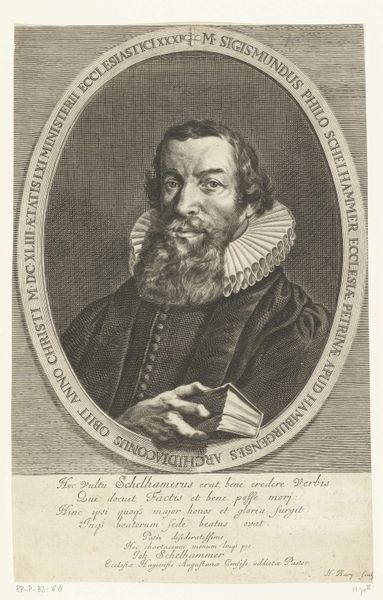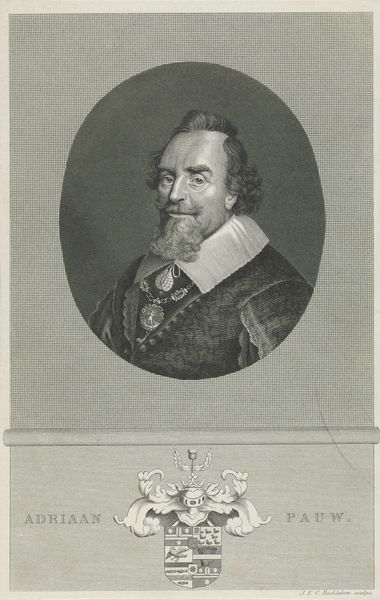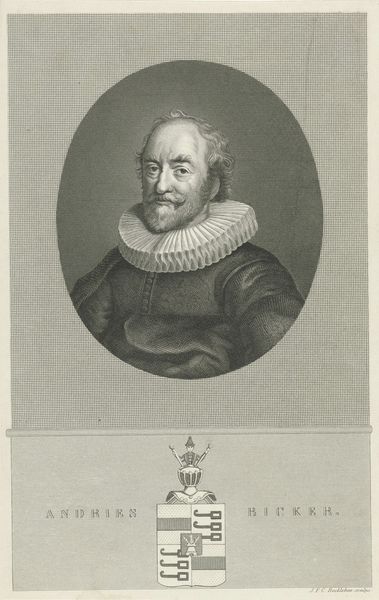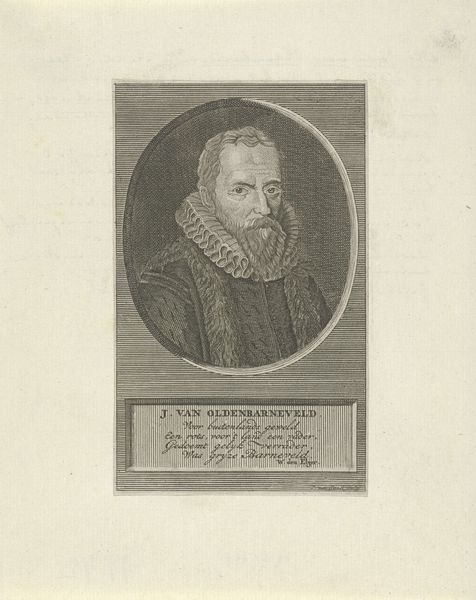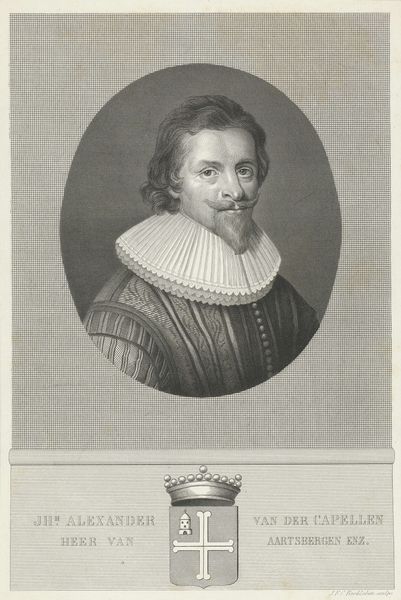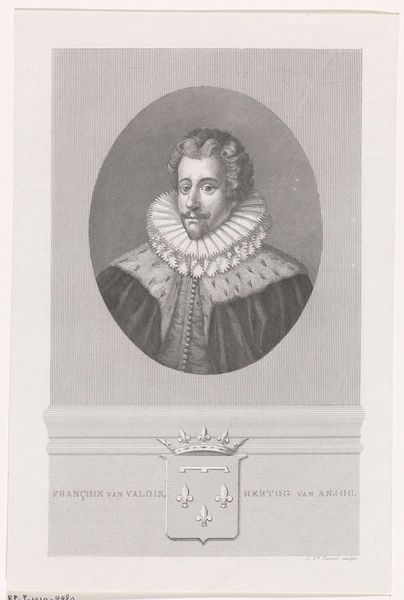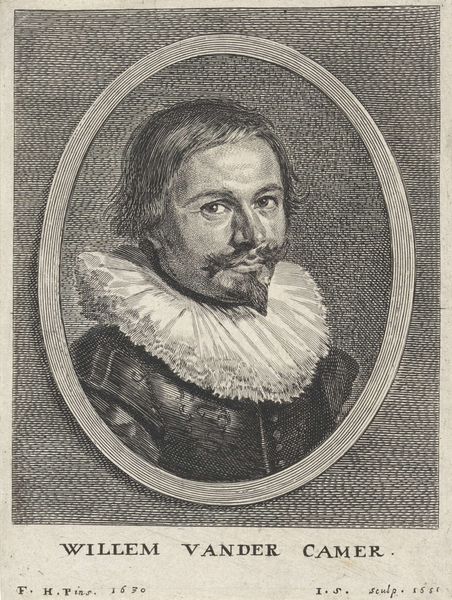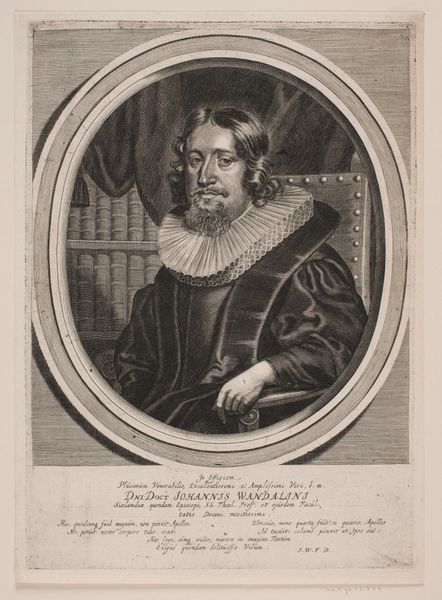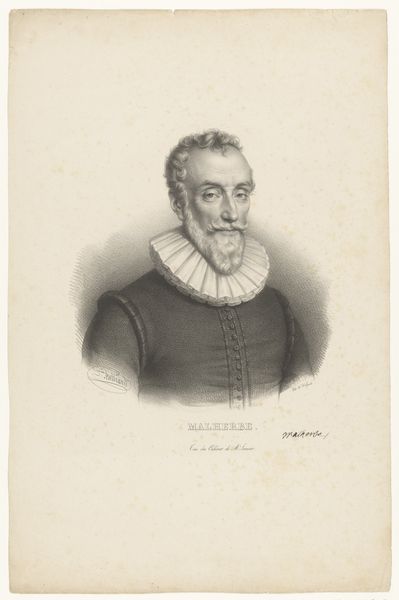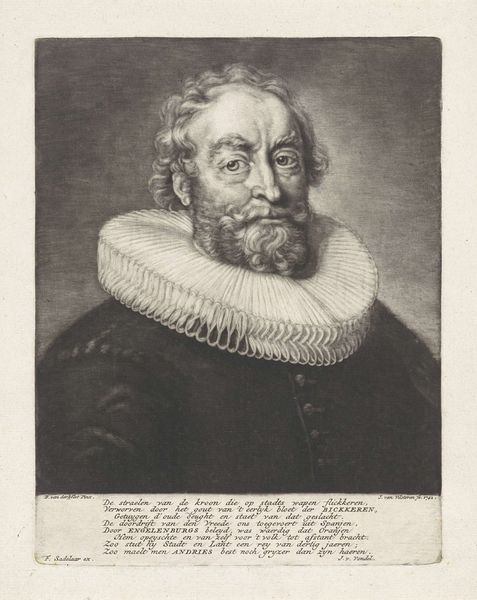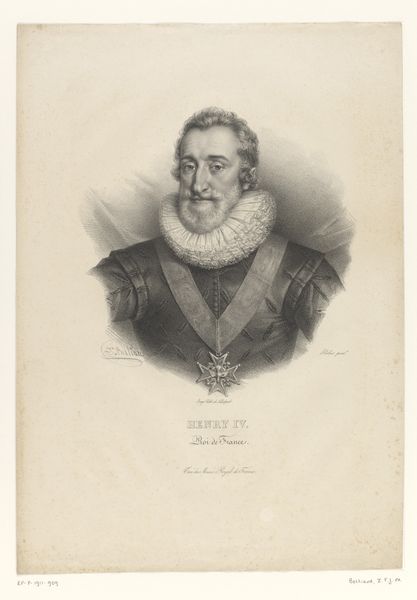
print, graphite, engraving
#
portrait
#
pencil drawn
# print
#
old engraving style
#
charcoal drawing
#
pencil drawing
#
graphite
#
graphite
#
engraving
Dimensions: height 245 mm, width 164 mm
Copyright: Rijks Museum: Open Domain
Curator: This is a 19th-century print housed here at the Rijksmuseum, identified as "Portret van arts Gaspare Aselli." Editor: My immediate reaction is its starkness. It's a somber portrait. I’m struck by the intricate lines used to capture the light and shadow, particularly on that elaborate ruff. Curator: The work by Antonio Locatelli uses engraving techniques along with graphite and pencil, according to our records. Gaspare Aselli, as the title suggests, was a physician. Prints like these often served a crucial function in disseminating images of prominent figures, contributing to their public image and lasting legacy. Editor: Absolutely, these prints were the social media of their day, right? Considering it’s made using engraving methods, there’s something fascinating in that translation of textures—the crispness of the ruff juxtaposed with the softer rendering of his beard, likely all carved and etched with significant manual effort. It speaks to the value placed on skilled artisanship. Curator: Indeed. Think about how access to visual representation was so controlled. The portrait of Aselli serves as an exercise in power and professional standing—and it reflects the rising status of doctors in broader society. What did it mean to have your likeness made so public? Editor: Well, what interests me more is how it's made so public. This wasn't oil on canvas destined for a private collection. The printmaking process allows for wider distribution, essentially democratizing Aselli's image and influencing broader visual culture and understanding. It is a multiplication of labour in service of reputation. Curator: Certainly. It underscores the democratizing effect that printmaking enabled for portraiture, particularly among a rising class of professionals and academics seeking to cultivate an image. Editor: Looking closer, there’s an incredible dedication to detail here, each line etched with a specific purpose to bring out depth. Considering the labor and materials invested, one could see how each impression was precious, an object designed for distribution and social impact. Curator: I agree completely. And, from my perspective, the image’s solemnity reminds us of the period's broader artistic conventions and its values of portraying serious accomplishment in medicine. Editor: Thinking about the process adds another layer to how we read this print today, as a material and cultural artifact from the 19th century that tells us much about society, representation and manual skills. Curator: Indeed, thinking about the labor helps us recognize the multiple layers that a seemingly simple print possesses.
Comments
No comments
Be the first to comment and join the conversation on the ultimate creative platform.
